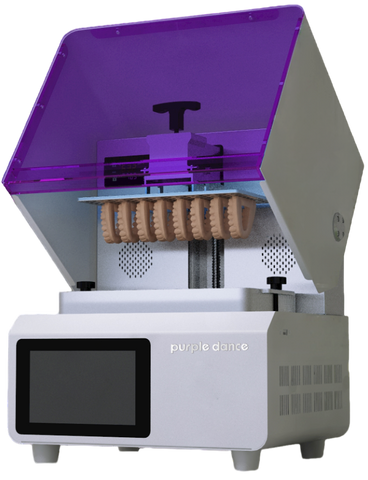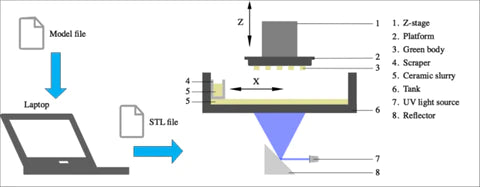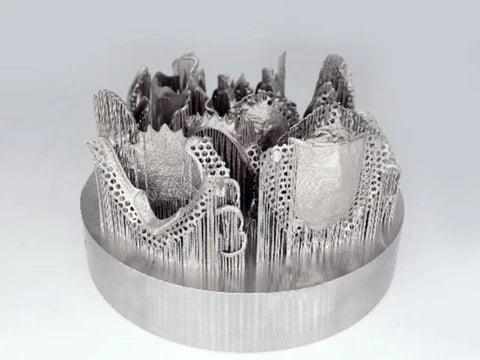There are currently 4 common types of dental 3D printing on the market:
1, LCD 3D printer;
2, DLP 3D printer;
3, SLA 3D printer;
4, SLM 3D printer (for metal 3D printing)
First introduce the LCD 3D printer:
LCD 3D printer is also called MSLA 3D printer, the full name is Masked Stereolithography. The forming principle of the LCD printer is: the light source generates a surface light source with a specific slice shape through the LCD screen panel, irradiates the liquid resin at the bottom of the resin vat through the transparent film (for example FEP film), and prints the 3D model through layer-by-layer solidification. After years of development, the LCD printing screens used in 3D printing have changed from the original 2K to the current 4K and 8K( for example PurpleLab D8K Pro) , and 12K resolution LCD printing screens will also enter the market. The application in the field of digital dentistry is to print orthodontic models, restoration models, surgical guides, transparent invisible braces, indirect paste trays, movable denture bases, crowns, bridges, artificial gums, etc.

DLP 3D printer:
The light source of the DLP printer is a light projector. The projector emits slice-shaped surface light through a transparent film to irradiate the resin at the bottom of the resin tank, and the 3D model is printed out through layer-by-layer curing and superimposition. Each layer of the model can be solidified instantly at one time, so theoretically the printing speed can be very fast. Currently, the best-selling DLP printers on the market still have 2K and 4K resolutions, and projectors with 8K and higher resolutions will enter the market in the future. But stable and high-quality projectors are often very expensive, which is why the price of DLP printers is much higher than that of LCD printers. In addition, the light emitted by the light source of the DLP printer is divergent light, which means that the larger the printing area, the weaker the light intensity projected to the bottom of the resin tank, so the printing size of the DLP printer is usually relatively small. The application in the field of dentistry is to print orthodontic models, restoration models, surgical guides, transparent invisible braces, indirect paste trays, movable denture bases, crowns, bridges, artificial gums, etc.

SLA 3D printer:
The light source system of the SLA printer is composed of a vibrating mirror system and a laser emitter, which emits a beam of light. The vibrating mirror system adjusts the beam spot to scan at the bottom of the resin vat, and scans the liquid resin through a transparent film. The curing process of the liquid resin is from point to line, from line to surface, so the printing speed of SLA printers is much slower than that of LCD and DLP. The purchase cost and maintenance of the galvanometer system and the laser are relatively high, and it is difficult for ordinary users to solve the problem of the printer light source, so the maintenance cost is very high. In addition, because the power used by the laser transmitters of different manufacturers is not consistent, the optimal curing light intensity of resins from different manufacturers is also different, which makes it difficult for dentistry SLA 3D printers to use third-party resin materials. The application in the field of dentistry is to print orthodontic models, restoration models, surgical guides, transparent invisible braces, indirect paste trays, movable denture bases, temporary crowns, bridges, artificial gums, etc.

SLM 3D printer:
The full name of SLM is Selective laser melting. The core components of this type of printer include a galvanometer system and a high-power laser. The materials used are metal powders, such as stainless steel, die steel, cobalt-chromium-molybdenum, copper alloys, titanium alloys, aluminum alloys, and high-temperature nickel-based alloy powders. The principle is to melt the metal powder layer by layer through a high-power laser. Every time a layer of powder is laid, the laser melts the metal powder in the section shape area of the slice, and then lays the next layer of powder, and so on. Applications in the dental field are typically printing crowns, bridges, brackets and implant linkages.


